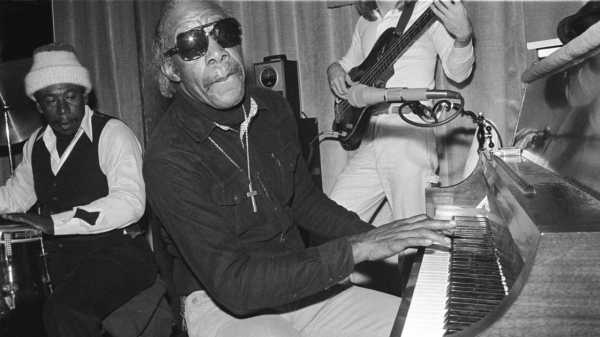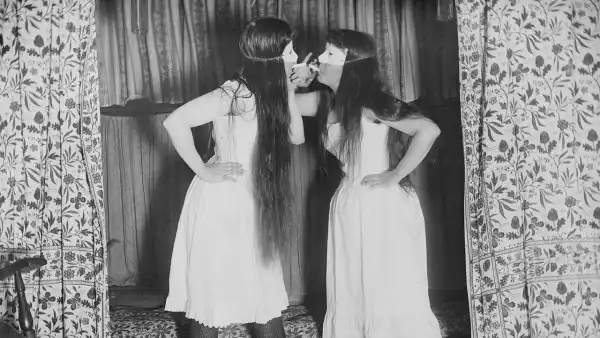
The New Orleans pianist Professor Longhair once described his particular genius at the keyboard as “that little gimmick I does.” I don’t think he was being especially coy, or even self-effacing—when your instinct for something is so finely hewed that it feels preternatural, it can be hard to recognize your own virtuosity, or to notice just how hard other people are working to keep up with you. Professor Longhair—who was born Henry Roeland Byrd, in 1918, and known, more colloquially, by the honorific Fess—was that sort of player: a savant, an eccentric, a visionary, a gold tooth bobbing in the back of the barrelhouse, scrambling everyone’s brains.
Almost every musical history contains at least one crucial forebear whose inventions were too bold to translate to a broad audience, but who was nonetheless a profound influence on subsequent generations, and therefore changed the culture at an odd remove—a musician’s musician. In the nineteen-forties and fifties, Fess mixed Afro-Caribbean clave rhythms with American R. & B., building on what Jelly Roll Morton had been messing around with as early as 1910, with his song “The Crave,” but making it heavier, pricklier, different. When Fess sang, he did so in the punchy, precise style of the postwar blues shouters, but on occasion he warbled like a deranged songbird. His songs were never ponderous or aching—he was more interested in conveying what he referred to as “pep.” Consider this live version of “Tipitina,” from 1978—Fess recorded it while aboard R.M.S. Queen Mary, a retired transatlantic ocean liner that Paul McCartney had rented for a party. (Other guests that night included Bob Dylan, Joni Mitchell, the Jackson Five, and Cher; Lee Dorsey, Ernie K-Doe, Chocolate Milk, and the Meters also performed.) It’s one of the most immediate and undeniable performances I know. Each time I hear it, I feel a renewed sense of wonder—a strange, flooding joy. “There’s Professor Longhair, and then there’s the rest of us,” the producer, pianist, and songwriter Allen Toussaint once said. To suggest that Fess exists on his own spiritual plane feels fair.
Earlier this spring, to celebrate Fess’s centennial, a crew of New Orleans filmmakers and preservationists, including Blaine Dunlap, Polly Waring, and Nell Palfi, released a new two-disk boxed set that reiterates Fess’s significance to the history of American music. “Fess Up” contains a DVD of Stevenson Palfi’s extraordinary (and, for many years, very difficult to see) documentary “Piano Players Rarely Ever Play Together,” which aired on public television, in 1982, and features Fess performing alongside Toussaint and his mentor Tuts Washington, plus a ninety-five-minute interview with Fess, recorded just two days before his death, in 1980, at age sixty-one.
Fess was born in Bogalusa, Louisiana, a lumber town about seventy-five miles northeast of New Orleans. (It was named after a Choctaw phrase that translates as “dark water.”) In 1902, the Great Southern Lumber Company, which had already bought up thousands of acres of virgin pine forest in Louisiana, opened a sawmill there; it was a company town in the purest sense. (For more than fifteen years, the manager of the plant, William H. Sullivan, was elected and then reëlected mayor.) In 1920, Fess moved with his single mother from Bogalusa to New Orleans. Per the reigning lore, he learned how to play on a piano that had been abandoned in an alley. (It was, he later said, missing a few keys, which was part of the reason he played with such a syncopated style.) He started recording in 1949, and in 1950 Mercury Records released his one and only hit, “Bald Head,” a goofy song about loving a woman who, inexplicably but not discouragingly, “got no hair.”
For a long time, this was the closest Fess would get to commercial success, though his acolytes—Fats Domino, Dr. John, Toussaint—did eventually find purchase on the charts. You can’t blame Fess for getting frustrated. He periodically quit music, sometimes in a huff; for a while, he worked as a janitor, and gambled. But by the time Palfi came around with his video camera, Fess’s career was in the midst of a much-deserved renaissance. In 1971, he’d been invited to perform at the New Orleans Jazz & Heritage Festival, killed it, and was asked to close the festival every year thereafter. Celebrities were dropping his name in interviews. He was preparing for a tour with the Clash. The world beyond New Orleans finally seemed ready to gobble up Fess’s “mambo-rumba-boogie,” as Toussaint once called it.
That Fess didn’t live to see his inventions fully revered and canonized still feels cruel. The restoration of “Piano Players Rarely Ever Play Together” is a small boon against that sorrow. “Originally, this started out to be a music performance by three gifted New Orleans pianists who influenced each other’s music, featuring each executing his individual style, and culminating with all three playing a number together,” Palfi explains in a voice-over. “It evolved, however, into a more interesting and complex story.” I won’t ruin the movie by recounting all my favorite bits, but in its latter half Fess becomes the session’s de-facto leader, corralling Washington and Toussaint, deftly braiding their narratives. I can barely follow his instructions—he’s speaking in a musical shorthand that I presume is only legible to pianists of his calibre—but whatever happens next, when the three of them start playing together, is so excellent it actually makes me laugh. What a gift, to be alive on the same planet these three men once occupied!
“Piano Players Rarely Ever Play Together” ends with footage of Fess’s funeral, which, in proper New Orleans style, is elaborate and beautiful. There was an open casket, which Palfi doesn’t film around, exactly—you can see Fess’s face there, his head propped up by an American flag. I was shocked by how moved I was by the shot—how frank and intimate it felt, to see his body like that. There’s crying and rich, guttural singing; the line between the two is often nebulous. Be sure you have something good to drink while you watch, and plenty of room to dance.
Sourse: newyorker.com






